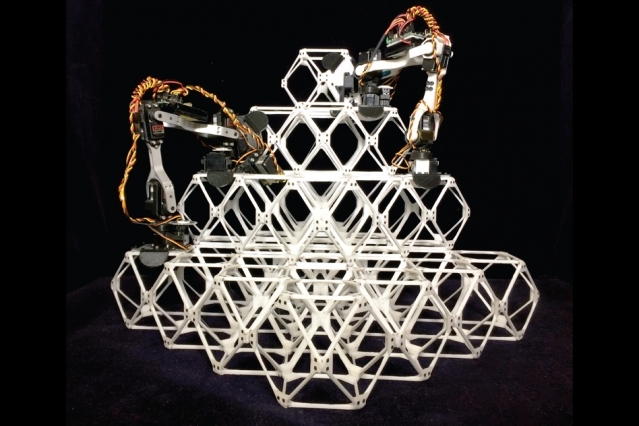Oldendorff Looks Beyond Traditional Naval Architecture

Oldendorff Carriers has signed a research agreement with the Massachusetts Institute of Technology’s (MIT) Center for Bits and Atoms (CBA). Oldendorff, together with CBA and its campus collaborators including MIT's Sea Grant Program, will investigate disruptive improvements in ship design and propulsion to achieve the IMO 2030/50 requirements.
The initial emphasis will be directed at improving hydrodynamic efficiency, which builds on work CBA has been doing with the aerospace and automotive industries. This looks beyond traditional naval architecture to a deeper integration of form and function. Anticipated research areas include morphing structures, hydrodynamic cloaking, moving boundary layers and alternative energy sources.
CBA's digital material technology is based on digitizing not just designs but also the construction of materials, in the same way that all of life is based on 20 amino acids. The resulting structures promise to bring to shipping benefits including record-setting material properties, integrated heterogeneous functionality, automated lifecycle assembly and disassembly, and reduced environmental footprints.
According to Clarkson Research, only about 30 percent of the world fleet today is made up of “eco” vessels. However, since 2013, Oldendorff has invested $3 billion in 90 new eco vessels built in China, Korea and Japan, which have fuel-efficient and reduced greenhouse gas emissions engines, and a number of fuel saving devices to reduce consumption and carbon emissions. Today over 95 percent of the Oldendorff fleet, and most of its chartered vessels, are eco type vessels. The average age of the 116 vessels of the Oldendorff owned and bareboat chartered fleet is 4.09 years. The fuel savings devices already being employed by Oldendorff vessels include:
• Economical hull forms
• Becker Mewis duct
• Rudder bulb
• Spoon bow
• Auxiliary engine economisers
• Ultra long stroke engines
• Larger propellers
• Boss cap fin propellers
• Fins fitted in front of skewed propellers.
MIT's Center for Bits and Atoms is an interdisciplinary initiative exploring the boundary between computer science and physical science. It's known for pioneering advances in digital fabrication, materials, robotics, computing, biology and design. It manages a unique facility for rapid-prototyping across length scales and has created a network of thousands of community fab labs.

